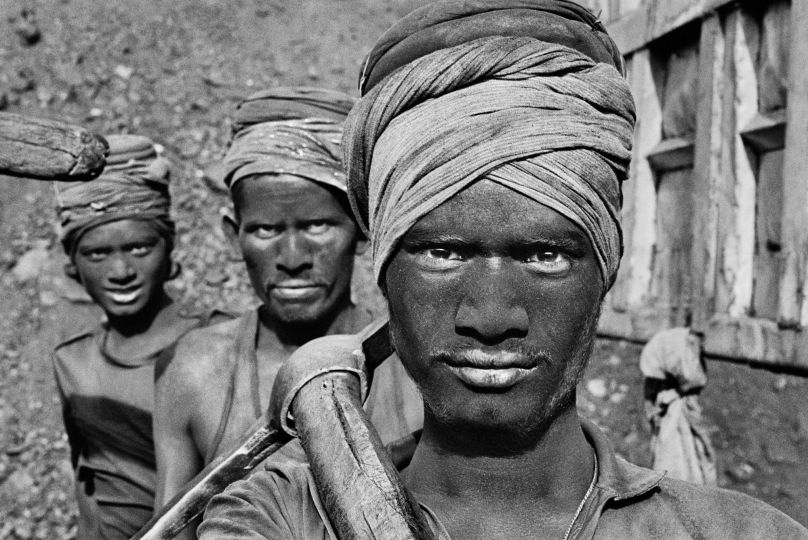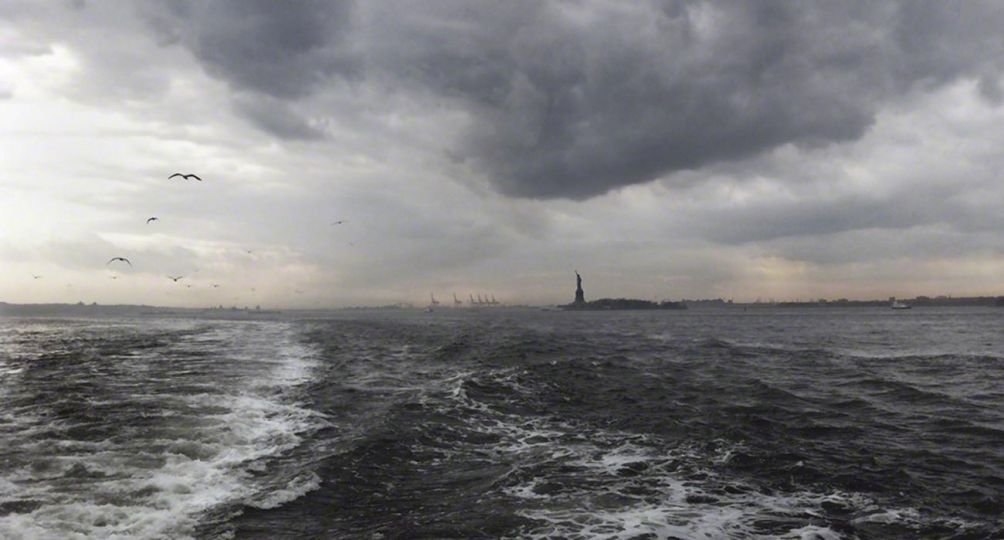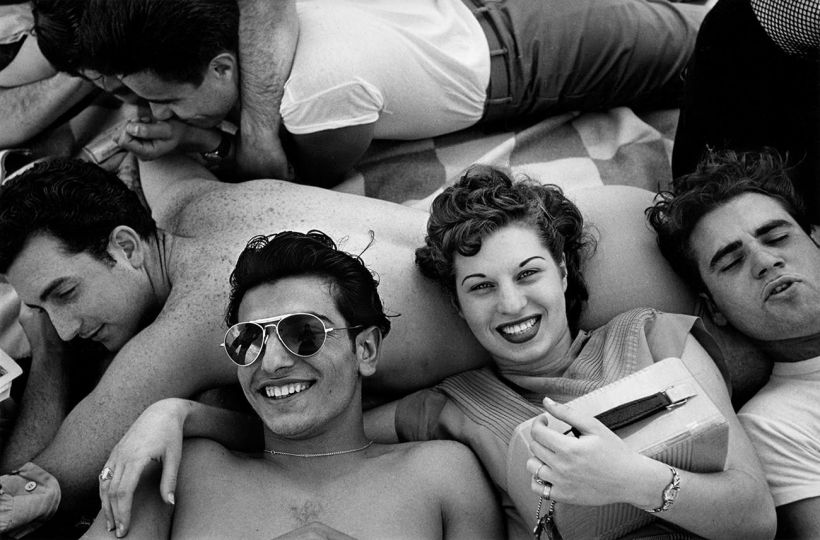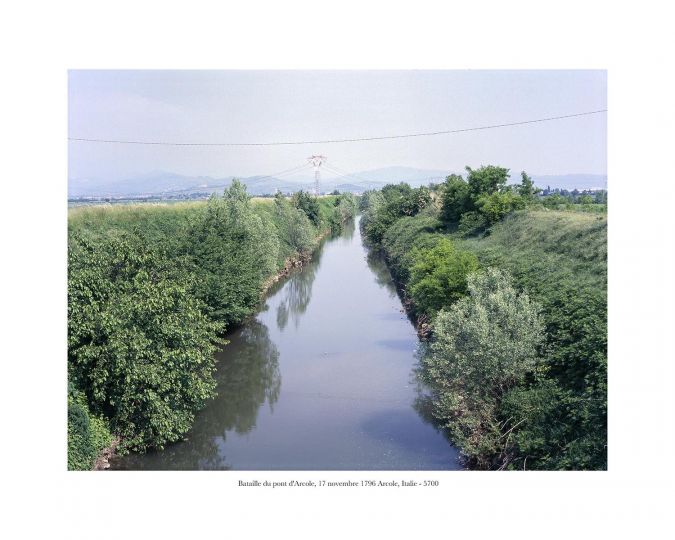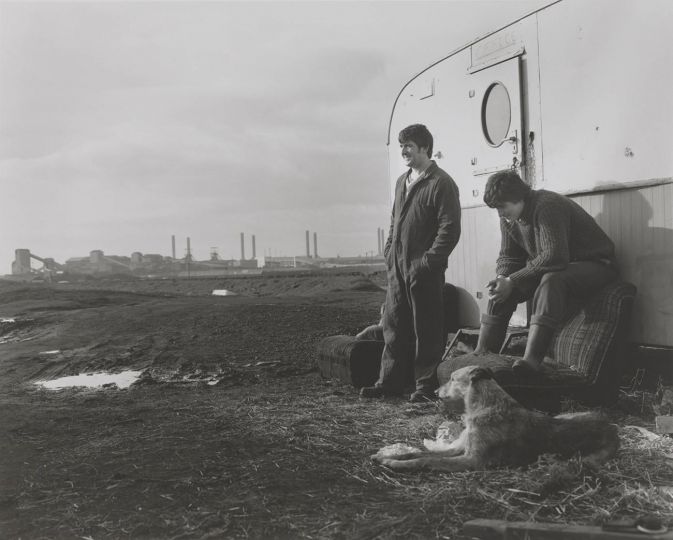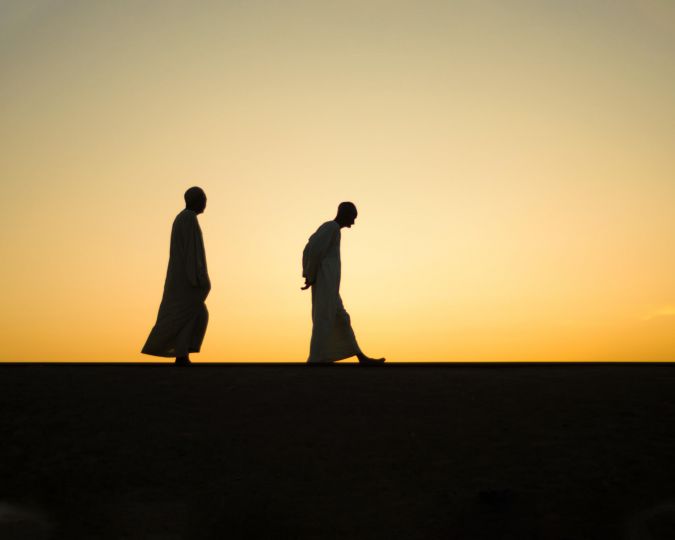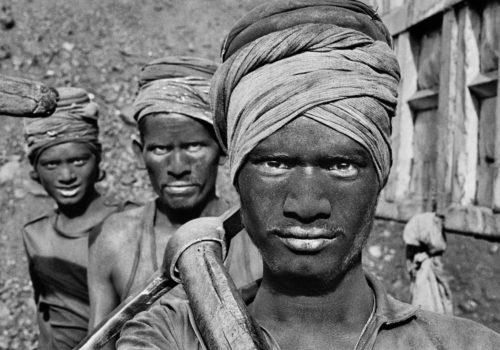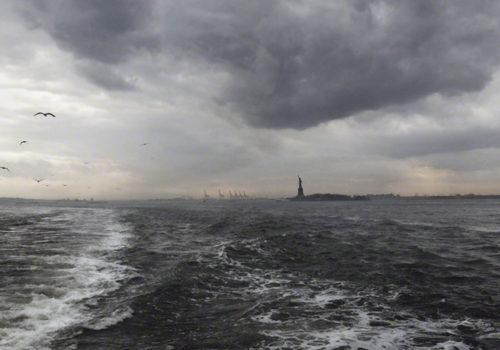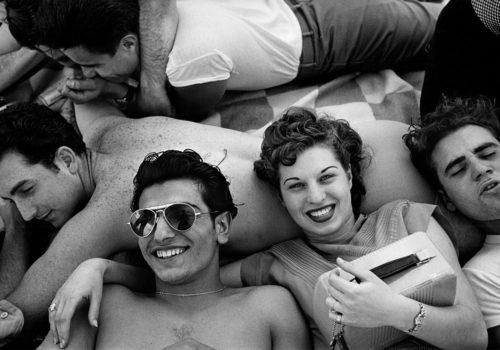Unseen challenges participants to bring recent work, undiscovered talent – hence the name. It has had an eventful history in recent times: 2020 was a special year for Unseen, and not just because of Corona. In January 2020, the main companies behind the initiative were declared bankrupt, and a month later a new group was preparing for a relaunch. The new leadership entered into an association with Foam, which became a content partner. In July, everything was still rosy, but shortly afterwards, the 2020 edition was cancelled. This year, Unseen is sandwiched between Photo London (until 12 September) and Photo Basel (24-26 September). For many galleries, it was a difficult choice, and perhaps a consultation and agreements between these major players would be a good solution for all parties, not least for photography and for the public.
Today, the past seems to be a distant memory, and with a new director and new ideas, they are preparing for a great new offering: more than 60 galleries signed up, a total area of more than 2500 square metres, and the hope of welcoming a quality audience of collectors and curators. As many as 25,000 visitors will be shown around the unique Westergas (1) location.
Roderick van der Lee becomes the new director of a reinforced Unseen (2)
Roderick van der Lee was one of the founders of Unseen. He now returns as director for the ninth edition, which will take place from Friday 17 to Sunday 19 September 2021 in Westergas. “Having led international photography projects from Paris and London in recent years, the added value of Unseen has become even clearer to me: the fair is a global leader in the discovery and collection of innovative photography. It feels great, as initiator and co-founder of Unseen, to be back and to work together with the strong team of Art Rotterdam and GalleryViewer. I also look forward to working with Foam as a content partner, providing a platform for young photography talent and the galleries that represent them. As far as I’m concerned, this is the ideal combination to make Unseen a successful powerhouse.”
Future vision
With recent developments in mind, the new director emphasises the importance of the galleries and of high quality standards: “The fair will become the main focus again and the participating galleries will take centre stage. What will remain, also thanks to a strong new selection committee, is the high level and international character of the presentations. In terms of visitors, we are aiming for a more significant presence of international collectors and curators.”
Two new sections
I am particularly looking forward to two new additions: Past/Present and Unbound.
They pay attention to the origin as well as the horizon of photography, they also emphasise the strongly curated character of the fair and the involved commitment of the participating galleries.
In Past/Present (3 &4), Unseen will, for the first time in its existence, pay attention to vintage photography from before the year 2000. By means of strongly curated presentations, a clear, thematic dialogue between vintage work and work of contemporary photographers will emerge. For example, the renowned German gallery Julian Sander will be showing historical work from one of the most important series in photographic history, ‘People from the 20th Century’ by August Sander, accompanied by a contemporary take on the photographs by New York artist Michael Somoroff.
With Unbound (5), a section in which free-standing projects explore the boundaries of photography on a monumental scale. In the 700-square-metre Transformatorhuis, artists will be given the space to transcend traditional two-dimensional photography. They will do this on the basis of installations that touch on installation art, video art, digital art, sculpture and other art forms.
BINOME (Paris)
In search of new forms and perspectives in photography, the Galerie Binome brings together four artists whose work reverses the course of time in photography, by proposing a vision of the future, like an archaeology of the future.
Thibault Brunet (1982) (6-9)
The Boîte noire, 2019 series was born out of a strange feeling of being a voyeur and contemptor of an excitement conducted away from ethical considerations in favor of an algorithmic aesthetic.
«The views made from YouTube videos sorted to retain only those of the media, translated into jpeg, then modeled in 3D arrange the ruins of war in Aleppo and Damascus in the form of a membrane almost organic and closed on itself. Halfway between the museographic restitution and the video game, these models seem derealized and para-dimensionally re-corporated at the same time.»
The Skin series 2020 form a contiguous work with and complement the pieces in the Boîte noire series (2019). In digital language, «Skin» is understood as the matrix elements that make up a three-dimensional digital form. Through a process of unfolding, Thibault Brunet lays out the textures of the buildings, which are spread out like the loose bricks of a Lego box before the model is constructed.
Guénaëlle de Carbonnières (1986) (10-13)
Submergées, 2020-21 & Captures fossiles, 2020-21 Aquarists have a choice of numerous reproductions of ruins, evoking the monuments of the Acropolis or the temple of Angkor, to transform the aquarium into a phantasmagoria. This is the aesthetic proposal of Guénaëlle de Carbonnières in her series entitled Les Submergées. The artist took advertising photographs of these products sold in pet shops and subjected them to a photographic operation: placed in contact with a photosensitive analogue medium, they produce prints in which the ruins appear in negative, playing with all the chemical effects of the emulsion, made of gleams and drips that transform these modest objects into imaginary incunabula of lost civilisations. In a second phase, the negatives used to make Submergées are included in blocks of resin to become, in this new «recording» operation, Captures Fossiles.
Marc Lathuilliere (1970) (14-17)
Fractal Spaces, 2013-18 is an Interrogation on our relationship to the industrial era and its representation. It is a corpus of photographs of peri-urban landscapes captured thru vegetation. The images were taken in the Rhone Valley, the most industrialized region in France. Photographed during the budding season, between winter and spring, the landscapes represented mimic, in order to divert them, the established codes of territorial photography: factories, industrial zones, low-income housing estates… are represented at a distance, under a pale sky and without human figures. These stereotypes of contemporary imagery are challenged by two forms of masking. The first, the intertwining of branches in front of the built-up background, reverses the perspective: it is not, as is usually the case in topographic photography, nature that is altered here, but rather nature that is on the lookout for threatened industrial spaces. It is a question of placing the point of view on the side of the nonhuman, vegetal or animal. This one questions the current process of deindustrialization, generated in particular by a networked economy in which our relation to the world extends in fractal arborescences.
The second masking is through the technique used: a transparent print mounted on a mirror. The reflection of vegetation and architecture in the sheen, on successive planes, suggests a more specular than documentary reading.
Lisa Sartorio (1970) (18-21)
Ici ou ailleurs, 2018-20 «This morning again, images of war invaded my daily life. Images of history that insidiously insert themselves into my own. Images that are more and more violent, more and more barbaric, in order to succeed in extracting themselves from the mass and becoming visible. These images supposed to inform us are so numerous, the same ones multiplied to illustrate press articles, that they become transient. … The war is real, but I lack its reality because I have not experienced it. I am only the passive witness of these atrocities constantly repeated.» Starting from the critical observation with regard to disembodied images smoothed out by media broadcasting, Lisa Sartorio seizes photographs of cities ravaged by bombing, which she prints on Awagami kozo paper. She then comes to work manually on the surface of this thick paper with an extremely fibrous texture, and carries out various treatments of the order of gumming, folding or crumbling. By deteriorating these photographs of places, of which she only keeps the name of the conflict as an identification, she brings the viewer to the epidermis of the image, like a peeled, fragile and reactive surface.
BRADWOLFF & PARTNERS (Amsterdam)
John Hilliard (1945) (22-24)
John Hilliard started off as a sculptor. His early work consisted of creating and analyzing images, which attitude still can be found in his photographic work. Hilliard approaches his surroundings as an observer, as well as a participant. A pioneer of conceptual art in Britain, he has broken new ground in photography by juxtaposing the possibilities of the camera – as a device that represents reality – to its status in the context of the visual arts. His photography is rigorous and systematic, with an emphasis on the intellectual quality of the image, restraining the aesthetic appeal of the physical subjects depicted.
He studied at Lancaster College of Art (1962-64) and St. Martin’s School of Art (1964- 67). His first solo show was at Camden Arts Center in 1969. He participated in many exhibitions and his work was included in the group exhibition ‘Conceptual Art in Britain 1964 – 1979’ at the Tate Britain, 2016. His work was also part of many prestigious group exhibitions around the world, including: ‘The Family of the Invisibles’, Seoul Museum of Art, South Korea (2016); ‘Qu’Est-Ce Que La Photographie?’, Centre Georges Pompidou, Paris, France (2015); and in the UK: ‘Exciting As We Can Make It’, Ikon Gallery, Birmingham (2014); ‘… Hilliard is Emeritus Professor at the Slade School of Fine Art, University College, London.
Katrin Korfmann (1971) (25-28)
Katrin Korfmann observes her surroundings and in her unfolded images she creates new perspectives, revealing previously hidden aspects of the world we thought we knew. She makes collages of images taken at consecutive moments, that are put together in a pictorial way. She observes the world with an analytical view, taking a critical look at how people relate and move in their environment.
She has held residencies at the Rijksakademie in Amsterdam (2000), Cittadellarte in Biella, Italy (2001) and the Chinese European Art Center in Xiamen (2014), China. Since the late 1990s, her work has been exhibited internationally in museums, art institutions and public spaces. Her work is represented in collections in the U.S.: C21, Bill and Christy Gautreaux, Fidelity, Twitter; in Germany: Würth Foundation, Alison & Peter W. Klein, European Patent Office, Robert Bosch Foundation; in the Netherlands: Drake Collection, AMC Art Collection, AkzoNobel Art Collection, …
DUDOK DE GROOT (Amsterdam)
For Unseen 2021 galerie dudokdegroot presents three artists: Daan Paans, Paul Bogaers and Lex ter Braak. The artists share their interest in dimensions of time,nature,history,changeability,artefacts and research of material and technique. All three work with photography and the concept of photography- as their starting point and final medium.
Lex ter Braak (1950) (29-32)
The Alphabet of Lost Order is a series of works (photography, painting, drawings) in which he examines alphabets and grammars of variability, in an effort to apply the heraclitic pánta rhei – the constant transforming movement – nothing remains the same .
For Unseen the gallery selects a new series of polaroids, Lex ter Braak is producing for The Alphabet of Lost Order. For Ter Braak, the polaroid refers more to a painted representation of reality, rather than a graphic representation like other forms of photography does.
Daan Paans (1985) (33-36)
Paans: “Dimensions of time play an important role in my projects. In line with this, a key theme in my work includes the desire to gain an understanding, in the broadest sense, of the transhistorical variability of image-making.” Paans works combines photography with a technical camera, video and historical research.
His work begins with a documentary approach. By means of artistic research the projects usually result in a series of works using various media, and with an emphasis on photography. With The Killing of the Tree Spirit, Paans tries to predict the future form of cultural expressions.
The killing of the tree spirit
The rupture between human culture and nature appears to be a clear symptom of our contemporary society. The balance has been disturbed and people think they determine what the world and nature will look like in the Anthropocene era. In The killing of the tree spirit, Paans examines how modern man unnoticeably relates to his distant animistic ancestors. How do we worship, mythify and depict nature, and how do we unnoticeably seek the supernatural in the natural? Paans explores this with photographic work, with sculpture and 3d render and draws lines between the past and the present, in order to restore the bond between man and nature in a poetic way. He will experiment with research methods from biological evolution and a supercomputer, Paans will predict the future form of cultural expressions on especially one topic: the oak. For Unseen galerie dudokdegroot will present the first photos of the series.
Paul Bogaers (1961) (37-40)
In the works of Paul Bogaers (Tilburg NL) association and suggestion play an important role. His general approach can be described as the collage method; although his work, through the years, has taken many a turn, combination has always remained to be Bogaers’ central theme.
At the beginning of his career he made name in photography as one of the forerunners of the present interest of photographers in ‘vernacular photography’ and integration of found imagery in their work. As a starting point he used to take an image or object from one of his many collections, consisting of found snapshots, postcards and other pre-existing images, as well as photographs of his own hand. By placing different images next to another, sometimes turning them for a quarter or completely upside down or framing them in particular ways, he invited the viewer to perceive surprising new links and meanings.
Gradually he started to combine pictures with threedimensional objects, for example in his series The Forest (2015-2018), in which he used found black and white photos of people posing in trees, extending these images with modeled and actual tree branches. His most recent works are completely expanding into the sculptural domain. Bogaers extends his photos with paper maché, cardboard, metal, fibers and all kinds of found objects. In some cases he abandons the photographic image completely, and pure sculptures remain. Bogaers’ work turns more and more into assemblages and installations, but still springs from the same old fascination of his, the collage method, that brings together parts from different worlds into one new image that has never been seen before.


